When Giovanni Battista Belzoni discovered the tomb of Pharaoh Seti I in 1817, he was astonished something so old could still be almost perfectly preserved.
Giovanni Battista Belzoni Discovered Pharaoh Seti I’s Tomb
“The tomb was intact, undisturbed for more than three thousand years. The colors were clear and bright as on the day it was finished, the brushes of the ancient artists still lying on the floor. A royal tomb of colossal proportions and beautiful carvings, it offered instant fame and fortune to its discoverer.” 1
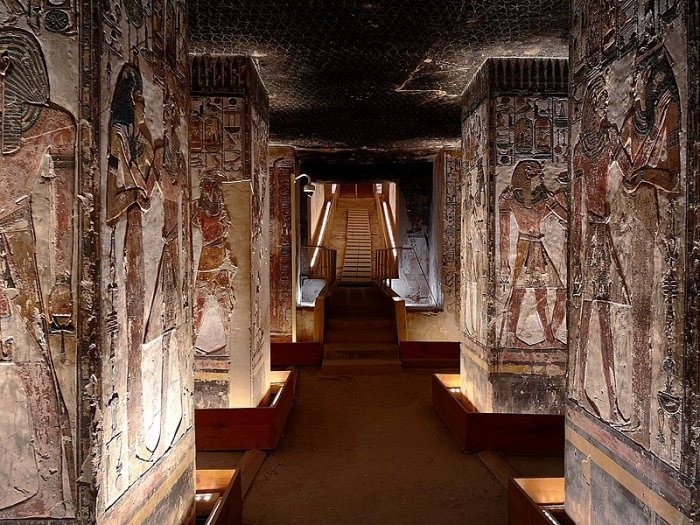
Belzoni certainly wanted fame and money, but not everything went according to his plans.
Giovanni Battista Belzoni (1778 -1823) was neither an Egyptologist nor an archaeologist, but he has been credited with many significant archaeological discoveries in the land of the Pharaohs. Of course, by modern standards, most would today say Belzoni’s activities in Egypt were more like looting than archaeological excavations. Still, he is nevertheless credited with the discovery of Seti I’s tomb.
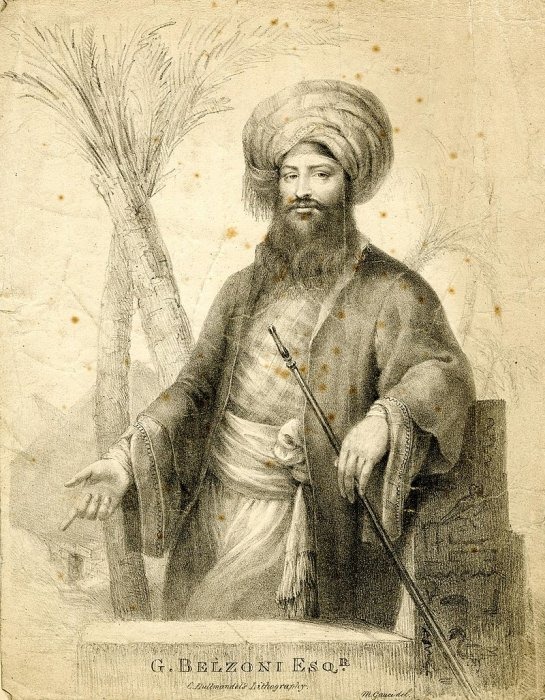
Born in Padua, Belzoni traveled to Rome at the age of 16 to study hydraulics. However, when Napoleon’s French troops entered Rome in 1798 and deposed Pope Pius VI, a frightened Belzoni fled to Amsterdam. For a while, he earned a living by selling false relics. In 1803, he realized it might be a good idea to take advantage of his six-foot seven-inch physique. He traveled to London and began his carrier as a circus artist.
Belzoni’s life changed dramatically when he went to Malta in 1815. He received an invitation from Muhammad Ali, the Pasha of Egypt who was interested in seeing his models of hydraulic engines. This was the beginning of Belzoni’s Egyptian adventure resulted in the discovery of many archaeological treasures. While being in Egypt, Belzoni became fascinated with the country’s ancient history, and he decided to become an archaeologist and treasure hunter.
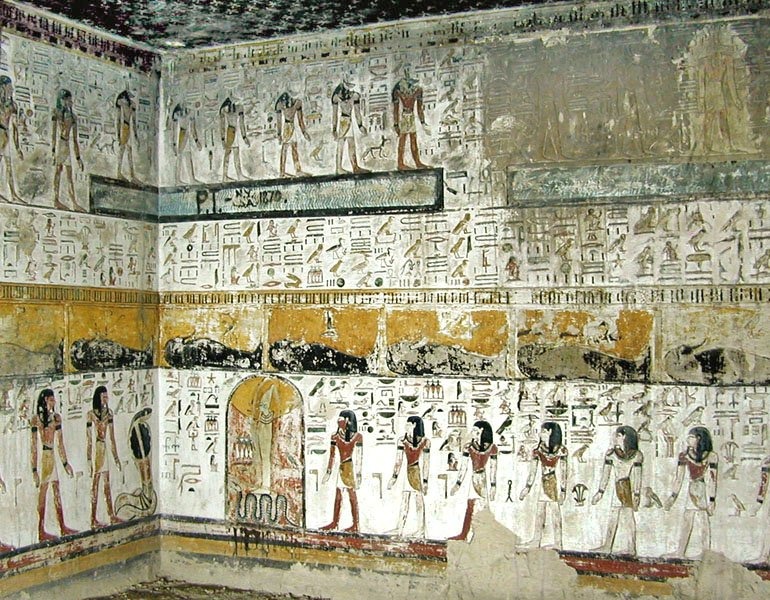
The British consul, Henry Salt, hired Belzoni to work in Egypt. Salt was a collector of antiquities, diplomat, and Egyptologist. The Italian was told to search for ancient Egyptian tombs and artifacts.
Belzoni participated in several archaeological missions, and in 1815 he discovered the colossal sculpture of the head of pharaoh Ramses II (“the Young Memnon”) that was transported to the British Museum.
The Italian amateur archaeologist is also credited with clearing the entrance to the great temple of Ramses II at Abu Simbel. In addition to this, he was also the first person to enter the pyramid of Khafre at Giza.
The discovery of Seti I’s tomb in the Valley of the Kings remains undoubtedly Belzoni’s most significant find.
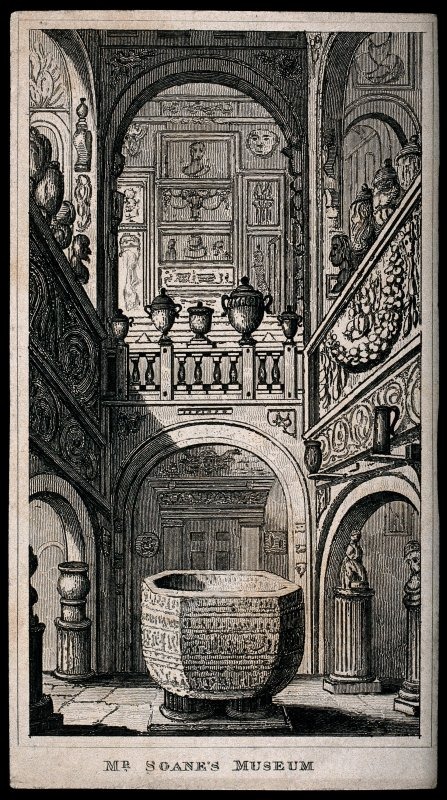
What Was Inside Seti I’s Tomb?
Pharaoh Seti I had no intentions of being put to rest in a small insignificant tomb. He needed and wanted something quite extraordinary on his journey to the afterlife. Shortly after having been crowned, the Pharaoh ordered to start building his colossal tomb in the Valley Of the Kings. When Belzoni discovered Seti I’s tomb in 1817, he estimated the burial to be approximately 328 feet (100 meters).
However, Recent excavations and studies of the tomb revealed that it is much larger than previously thought. The tomb has multiple passageways and more than a hundred small chambers. Archaeologists still haven’t been able to locate its end! Today, we know it is much larger than this. The tomb of Pharaoh Seti I the largest tomb and the longest tunnel ever found in any place in the Valley of the Kings. The tomb KV17, located in Egypt’s Valley of the Kings is also known by the names “Belzoni’s tomb”, “the Tomb of Apis”, and “the Tomb of Psammis, son of Nechois”.
The tomb of Seti I is artistically adorned and decorated. It features exquisite reliefs, colorful paintings, and an intricately carved column depicting Seti I with the goddess Hathor. Archaeologists also found clay vessels, fragments of the tomb’s painted wall reliefs, and a quartzite ushabti figure —a funerary statue.
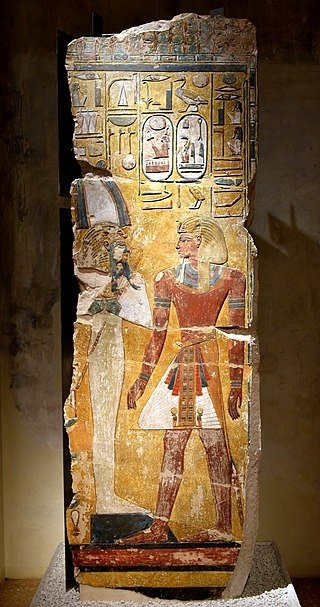
The tomb of Seti I also “contains the most complete representation of the Ceremony of Opening the Mouth ever represented in a royal tomb. These scenes are unique in Egyptian art and their importance for interpreting the ancient ritual is essential. Reliefs in the corridor leading to the sarcophagus chamber represent King Sety’s statues placed on pedestals as priests performed sacred rites that endowed them with everlasting life. Texts of the Liturgy of Opening the Mouth for Breathing were written below the images, shown in sequence on both walls.” 1
Belzoni’s Failure With The Sarcophagus Of Seti I
When Belzoni found Seti I’s sarcophagus, he understood this was a very precious object worth a lot of money. Knowing his employer wanted to sell the coffin, Belzoni inscribed his name on the sarcophagus so that everyone would know he was the discoverer of the Egyptian coffin. He hoped this would bring him some money once the object had been sold.
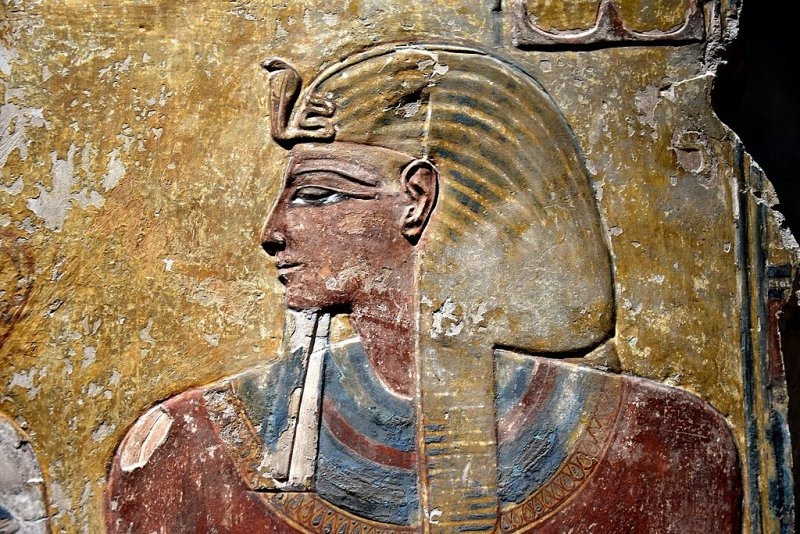
The sarcophagus and several other artifacts from the tomb of Seti I were transported to London in 1821, but the British Museum did not want to but Seti I’s coffin. It was not until 1824 that Sir John Soane bought the sarcophagus which is currently displayed in the crypt section, called Sepulchral Chamber, of Sir John Soane’s Museum in London. This did not do Belzoni much good because he was already dead, having died in 1823 as he began a journey to Timbuktu.
Why Was Seti I’s Tomb So Lavishly Decorated And Large?
Every Pharaoh wanted a stunning burial chamber, but Seti I’s tomb is the most extraordinary tomb unearthed in Egypt. One can wonder why he should deserve a tomb that is the most splendid ever built.
Looking from ancient Egyptians’ perspective, Pharaoh Seti I was unique and did more for the Kingdom of Egypt than most pharaohs.
“When a king died, the journey became crucial to the whole nation. The Pharaoh was the earthly incarnation of Horus, son of Osiris. When King Sety died it was one of the most difficult periods in Egypt’s religious life. The country had just endured the monotheistic “heresy” of king Akhenaten of the previous ruling family. The gods had abandoned Egypt and the dynastic struggle was followed by losses of territory and prestige. The entire balance of Egypt was disturbed, and the Egyptian world could not survive without balance, Sety, the father of Ramesses the Great, had just reclaimed lost territories and restored the ancient religious orders.
The Egyptians were determined to get him to the other side, to eternal life. Sety’s tomb had to be the most glorious ever built. Deep inside the rocks of the Western mountain architects hewed out a vast network of corridors and chambers and artists carved delicate reliefs on every inch of space.” 1
The mummy of Pharaoh Seti I was remarkably well-preserved and revealed he died unexpectedly at the age of 40. Why Seti I died is unknown, but there was no evidence of violence on his mummy.
During the Pharaohs’ Golden Parade in April 2021, his mummy and those of 17 other kings and 4 queens were moved from the Museum of Egyptian Antiquities to the National Museum of Egyptian Civilization.

Leave a Reply